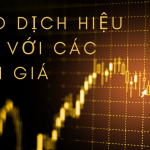Elliott waves are an important concept in the technical analysis of financial markets, especially in forex trading. Derived from the study of a technical analyst named Ralph Nelson Elliott in the 1930s and 1940s, this theory provides a unique insight into how financial asset prices move in wave patterns. In this article, we will break down what Elliott waves are, how they work, and the rules of operation.
What Are Elliott Waves?
Elliott Waves is a theory that assumes that financial markets move in repeating wave patterns and that these patterns can be broken down into smaller waves. Ralph Nelson Elliott believes that these wave patterns are closely related to the psychology of investors and repeat over a period of time. There are two types of waves in Elliott theory:
1. Impulse Wave: This wave moves in line with the direction of the main market trend. It consists of five sub-waves, where three point upward (1, 3, 5) and two point downward (2, 4). This wave strengthens the trend toward financial assets.
2. Corrective Wave: This wave goes against the main market trend and includes three sub-waves (A, B, and C). These waves help the market “correct” after the movement of the impulse wave.
Elliott Wave Operating Rules
Operating rules in Elliott Waves help traders identify and confirm wave patterns and measure relevant timeframes. There are some basic rules to follow when using this theory:
1. Wave 2 Cannot Fall Lower Than the Beginning of Wave 1: This means that when wave 2 in an uptrend (impulse wave) ends, the price cannot fall lower than the beginning of wave 1.
2. Wave 3 Can’t Be the Shortest Wave: Wave 3 is usually the longest and strongest of the five impulse waves. Therefore, it cannot be the shortest among the waves.
3. Wave 4 Can’t Exceed the Beginning of Wave 1: Wave 4 in an uptrend should not cross the starting price of wave 1. This indicates that a corrective wave in an uptrend does not turn into a downtrend.
4. Wave 5 Can’t Be Longer Than Wave 3: Wave 5 in an uptrend can’t be longer than wave 3. If it’s longer, it means the trend is weakening.
5. Wave B Cannot Fall Lower Than the Beginning of Wave A: In a corrective wave, wave B cannot fall lower than the beginning of wave A. This determines that the corrective trend is “ABC” and not “impulse.”
6. Wave C is Longer Than Wave A: Wave C in a corrective trend is the longest among waves A, B, and C. This indicates that the corrective trend has reached a resolution level.
Using these operating rules in Elliott waves requires practice and experience. Traders need to learn to identify wave patterns with accuracy and understand how market psychology plays a role in price movement. By practicing these operating rules, traders can leverage Elliott’s theory to make more accurate predictions in forex trading.
Elliott Wave is an important tool in technical analysis of financial markets. By understanding the basic principles and rules of operation, traders can gain an advantage in predicting the price movements of financial assets. However, it is important to remember that this theory is not always accurate, and traders should use other technical analysis as confirmation.







